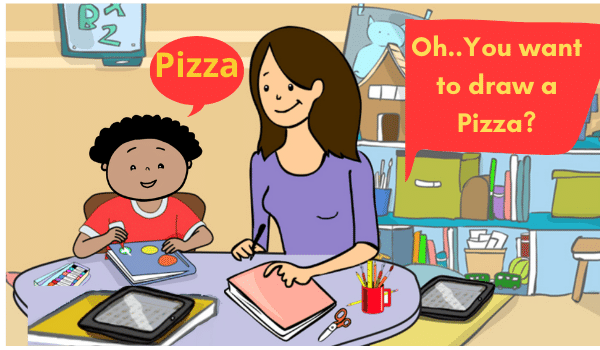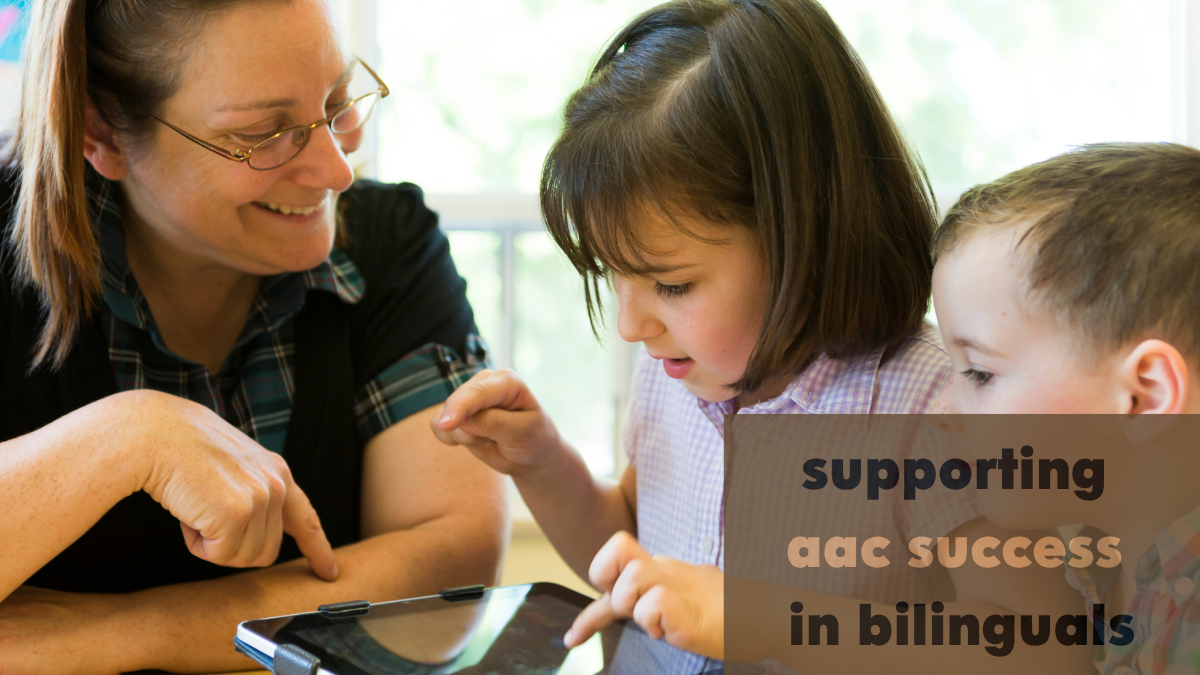Stimming or self-stimulatory behaviour is any repetitive body movement with or without objects. Everyone stims! When just before an interview we see someone cracking their knuckles repeatedly, they are stimming and it may be an expression of their anxiety. It can occur when we experience positive, negative, or neutral emotions. For individuals with special needs, especially, it is a way to regulate themselves and cope with their surroundings.
Stimming and AAC


AAC learners can sometimes use their communication devices for stimming. They may seem to be hitting buttons out of context. It might be frustrating for the parent who expects them to use it meaningfully. Sometimes, the repeated auditory output can be disruptive too.
What do we do? Do we just take the device away from them?
Definitely NO!!
We cannot take away a child’s mode of communication. It’s their voice.
Let’s see what we can do to manage their stimming behaviours instead.
What do Do When a Child is Hitting Seemingly Random Buttons
Here are a few things to do when you see a child make repeated utterances on their AAC devices
1. Observe, Observe, Observe- Why does Stimming Happen?
Because of the environment – too noisy/bright/crowded?
How they are feeling – tired / anxious?
In response to some outside trigger-the friend taking away their favourite toy?
Is it because they have the device in front of them but don’t know what to do with it -no functional activity on hand?
They may be stimming to express their frustration or to calm down or block out the sensory overload. Some children also do it so that they could get your attention!!
Try finding out if there are specific triggers and see if the causative factor could be modified.
2. It Maybe AAC Babble
When starting to use an AAC device, it is not uncommon for a child to hit random buttons on the device. They are exploring the device and want to see what they can do with it, how it looks and sounds. This is called AAC Babble. It’s very much like neurotypical children babbling as they learn to speak. Babbling is necessary and AAC learners need to hear the auditory feedback.
Even though it may look like the AAC learner is pushing a random button and uttering out of context, assume it to be a meaningful utterance and respond appropriately. By doing so we help the child in understanding that what he says is meaningful, while simultaneously showing them the right way to use the word!!


For example, if the child taps ‘pizza’ when playing outside, you can say, “Oh maybe you want to play the pizza delivery game?” and see if they are interested in the game.
3. Designated Time
If we know that the child is stimming for auditory or visual stimulation, we could mark a time slot in their visual schedule and a safe space where they could stim without interruption.
While stimming may not stop, it definitely makes it more manageable. (Besides, our goal is to facilitate communication, not stopping/blocking stimming unless it’s harmful)When the child starts using the device meaningfully, this time could be reduced gradually.
4. Another Tool for Stimming
If you feel that the child is using the device for stimulation, we can try offering another device instead, for satisfying their curiosity/ need for stimulation. By doing so we are sending them a strong message that the device is best used for COMMUNICATION PURPOSES
5. Stimming or Communication?
Sometimes a communicator might be repeating a word in the environment they are in.
For example, during book reading, they may say “apple, apple apple”. They may have seen an apple in the book and they are excited to talk about their favourite fruit( commenting). Or they may want their mother to get one for them (requesting). Make sure not to miss out on that!
Stimming in AAC – Observations from Therapy
Here are a few observations from my Avaz teletherapy sessions that illustrate how communication can be facilitated when you see stimming behaviours –
K( 6 years, Autism) was fond of chocolate and the minute his Avaz AAC device was open, he would go for that word and tap it several times. We decided to try using this as a reinforcement. We had a customised folder for favourite food and encouraged him to make the sentence ‘I WANT CHOCOLATE’. After modelling the sentence a few times, to our surprise, he did make the sentence and got his chocolate too!! He continues to occasionally tap his favourite word repeatedly but he has also learned to meaningfully communicate with the word. This has also led to him learning to use complete sentences to request other things. ( I WANT ANIMAL PUZZLES/GIRAFFE BOOK)


S(22 years, Autism ) was tapping buttons repeatedly on his AAC device. Suggestions from his OT to work on ‘soft touch” has helped him to successfully use single touch for selecting the target word.
Stimming may be happening randomly and look like it has no purpose. But on looking closer, you may be able to find patterns in repetitive behaviours. Careful observation can help us in supporting AAC learners to manage their stimming behaviours better. This can lead to more meaningful communication opportunities and a ton of learning.
WRITTEN BY
Niveditha Ryali
Speech – Language – Swallowing Therapist
I have 16 years of learning experience that comes from working in NHS(UK), special schools, hospitals and private practice. I’m passionate about working on improving Speech, Language and Swallowing skills in children and adults. I also strive to facilitate early communication in children with complex communication needs, thereby improving parent-child bonding.





